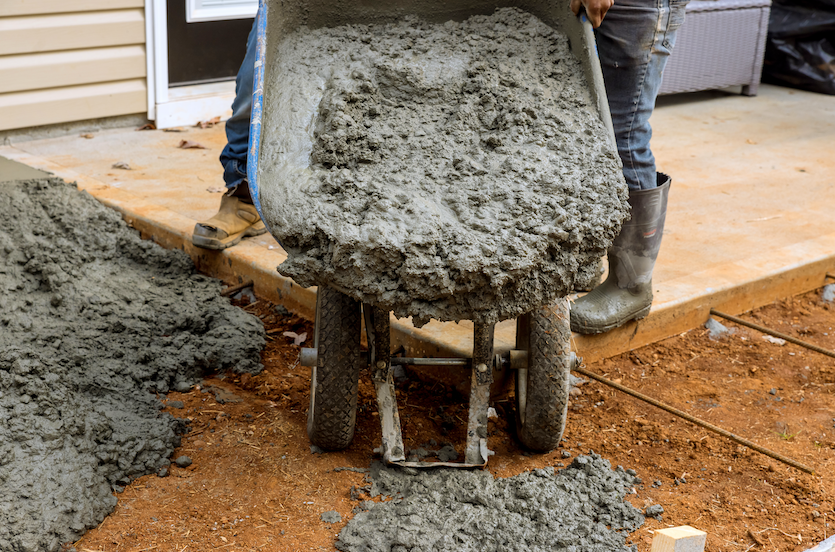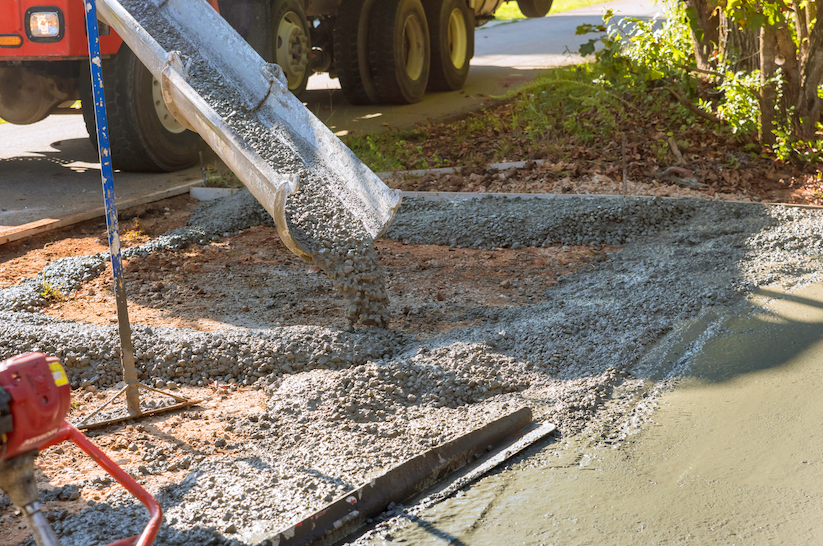When you’re planning a construction project that needs ready-mix concrete, you might find that a regular concrete mixer truck can’t reach where you need to pour concrete. That’s when you need a concrete pumping service. But before you book concrete pump hire, you need to know if your site has enough room for the equipment to work safely.
Let’s look at exactly what space you’ll need and why it matters for your concrete works.
What Equipment Does Concrete Pumping Use?
A concrete pump isn’t just one piece of kit. The setup includes the pump truck and either a boom or a line system to move your concrete mixes where they need to go.
Concrete boom pumps have a large mechanical arm that can reach over buildings and obstacles. The pump truck is usually 10-12 metres long and needs flat, solid ground to work safely. The boom can stretch from 20 to 60 metres, depending on what size you hire.
Ground line pumps work differently. They pump concrete through flexible hoses along the ground. These are better for construction sites with restricted access or when you’re working on terraced houses where a big boom pump won’t fit.
Space You Need for Boom Pumps
Your construction project needs a clear area where the concrete pump can park and set up its support legs. Here’s what you need:
Parking Space: You need at least 15 metres of length and 4 metres of width just for the truck. But you need more space around it too.
Support Leg Space: The support legs stick out from each side by about 2-3 metres. This means you need roughly 8-10 metres of total width for the whole setup.
Ground Conditions: The surface must be firm and level. Soft ground or steep slopes make it dangerous to operate the pump. If your ground is soft, you might need steel plates to spread the weight.
Making Room for the Boom Arm
The boom arm delivers your concrete and needs room to move safely:
Height Clearance: The boom swings up and over obstacles. Most can reach 15-30 metres high, but they need clear space above. Watch out for power lines, trees, or building edges.
Reach Distance: The boom can extend quite far, but it works best when the pump truck is close to your concrete pour area. Closer means better flow and fewer blockages.
Turning Space: The boom rotates in a circle around the truck. Make sure nothing in this circle can get hit – like cars, site cabins, or workers.
Getting to Your Site
Don’t forget how the concrete pump gets to your construction site. These trucks are big and heavy:
- Road width needs to be at least 3.5 metres wide
- Strong surfaces that can handle the weight
- Room to turn at corners
- Height clearance under bridges (usually need 4 metres)
Line Pumping for Tight Spaces
When your construction project has restricted access, line pumping might work better. Ground line pumps use a separate pump unit and flexible hoses. They’re smaller than boom pumps but can’t reach as far. This makes them perfect for:
- Terraced houses with narrow access
- Sites where boom pumps won’t fit
- Indoor concrete works
- Areas with lots of obstacles
Planning Your Concrete Pumping Sheffield Project
Before your concrete delivery day, do these checks:
- Measure your space and draw a simple site plan
- Check ground conditions – firm, level, and well-drained?
- Spot obstacles like power lines, trees, or buildings
- Plan the route from the road to the pump position
- Mark safety zones where people stay clear during the concrete pour
The Construction Plant-hire Association has detailed guidance on safe concrete pumping that’s worth reading before you start.
When Space Is Tight
Sometimes construction sites don’t have perfect conditions. Here are your options:
Use Line Pumping: Ground line pumps need less space and work well in tight areas.
Try Different Positions: A skilled operator can often find ways to work in small spaces, maybe parking on a nearby road (with permission).
Multiple Pump Positions: For big concrete pours, the pump can move to different spots during the job.
Why Professional Advice Helps
Every construction site is different. What works for one concrete delivery might not work for another. The best plan is to talk with your concrete pumping service about your specific site.
A good concrete pumping company works closely with you to visit your site first. They can see exactly where the pump needs to go and what prep work you might need. This site visit from your batching plant or pumping hire company can save time and stress on pour day.
They’ll know if your site suits concrete boom pumps or if line pumping works better. They can also check if your planned concrete mixes will flow well through their equipment.
Getting the Best Results
Good planning isn’t just about getting the job done – it’s about improving safety and getting quality results. A well-planned setup means:
- Faster concrete delivery
- Better concrete pour quality
- Fewer problems on the day
- Safer working conditions
This matters whether you’re doing high-volume concrete works or a small domestic job.
Working with Your Concrete Pumping Service
Take time to measure your space, check ground conditions, and talk with experienced professionals. Your concrete pumping Sheffield construction project will run much better when you’ve got the space requirements sorted from the start.
A good concrete pumping service will help you understand what equipment works best for your site. They know the difference between what concrete boom pumps need and what ground line pumps can handle.
Remember, it’s always better to have slightly more space than you think you need. Concrete pumping is precise work, and having room to move makes everything safer and more efficient for everyone on your construction project.



